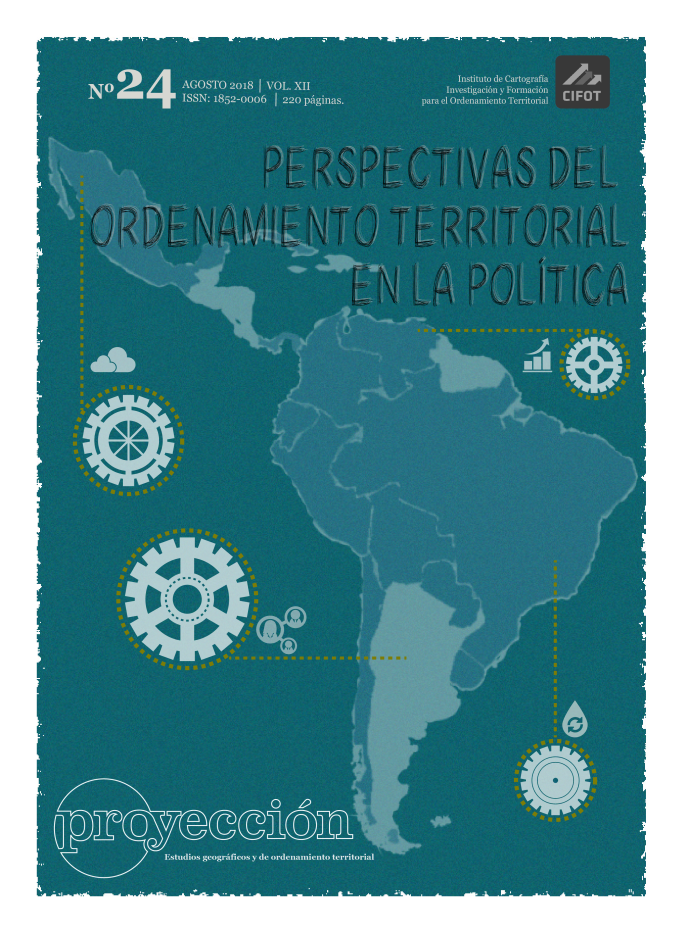From Structural to Detailed Land-Use Planning in the City of Valencia; Options and Limits for a New Integrating Community Planning: Case of ‘Ciutat Vella’
Keywords:
PGOU, Valencia, Detailed planning, Cohesive cityAbstract
The latest change of government in the city of Valencia has leaded in new approaches and practices for planning the city, in a reformulation of the urban policy in line with the citizen demands for the construction of the collective space. On the one hand, the city promotes participatory budgets for each neighborhood of the city as a unit of action. On the other hand, it promotes a review of the detailed planning instead of the structuring one since there is enough developable land. This is leading to a process of revision of uses, even de-classification, as well as to change the focus on a better provision of services and urban rehabilitation. Thus, community planning, which seeks the quality of life in the city, from an integral perspective, seems to have suddenly started given the excesses and overloads of the old urbanism. Participatory budgets and new detailed land-use planning are carried out in neighborhoods from different local government departments. This raises the challenge of coordination and coherence of the actions that are key for this new community planning to take root. This work addresses and analyzes these processes, and assesses the resulting situation.
References
BURRIEL DE ORUETA, E. L. (2008). La "década prodigiosa" del urbanismo español (1997-2006). Diez años de cambios en el Mundo, en la Geografía y en las Ciencias Sociales, 1999-2008. Actas del X Coloquio Internacional de Geocrítica, Universidad de Barcelona, 26-30 de mayo de 2008. <http://www.ub.es/geocrit/-xcol/383.htm
BURRIEL DE O., E.L. (2000). Claves de la rehabilitación urbana: El caso del centro histórico de Valencia. Cuadernos de Geografía 67-68: 329-350.
CORNWALL, A. (2004). New democratic spaces? The politics and dynamics of institutionalised participation. IDS Bulletin Vol.35, issue 2, pag 1-10.
DÍAZ ORUETA, Fernado (2013). Neoliberalismo, políticas urbanas y reconfiguración socio-espacial. Quid 16 Nº3 (7- 16).
DEL ROMERO, L. y LARA, L. (2015). De barrio-problema a barrio de moda: gentrificación comercial en Russa-fa, El "Soho" valenciano. En revista Anales de Geografía de la Universidad Complutense 35(1), 187-212.
FARINÓS, J. (2014). Ciudadanos, poder, gobierno y democracia; una forma de relación inestable. En J.L. Sahuquillo y J. Martín Cubas (eds.) La era de la #Política2.0. Valencia, Ediciones Casas-AVAPOL, 24-34.
FARINÓS, J. (2016). La dimensión territorial de la Política de Cohesión de la UE. Las EDUSI como posible ejemplo de una renovada planificación territorial estratégica. Conferencia impartida en el Acto anual de comunicación sobre Política Regional y Fondos Europeos", Mesa redonda sobre Desarrollo Urbano, Sostenible e Integrador. Madrid 24 y 25 de noviembre.
GAJA I DÍAZ, F. (2015). Reparar los impactos de la burbuja constructora. En Scripta Nova 517 (2015) 1-37.
HARVEY, David (2013). Ciudades Rebeldes: del derecho a la ciudad a la revolución urbana, España, Akal pensamiento crítico.
HEALY, P. (1996). Collaborative Planning: Shaping Places in Fragmented Societies. Londres: Macmillan.
JANOSCHKA, M.; SEQUERA, J. y SALINAS, L. (2013). Gentrification in Spain and Latin America- a critical dialogue. International Journal of Urban and Regional Research. DOI:10.1111/1468-2427.12030
LEES, L.; SLATER, T. Y WYLY, E. (2008). Gentrification. Routledge: New York.
LEFEBVRE, H (1974). La Production de l´espace.Anthropos,París.
MONTESINOS, J. (2017). Ciudad, patrimonio y gentrificación. Hacia una casuística significativa con el mal llamado Plan de la Muralla. Valencia, UV (inédito).
ROMERO GONZÁLEZ, J. (2010). Construcción residencial y gobierno del territorio en España. De la burbuja especulativa a la recesión. Causas y consecuencias. Cuadernos geográficos de la Universidad de Granada, 47(2), 17-46.
ROS PASTOR, A. y ALCAIDE BLANQUER, C. (1998). La imagen de Ciutat Vella. En Ros Pastor, A. y Alcaide Blanquer, C. 5 años de intervenciones en Ciutat Vella: 1992-1997. Valencia, Icaro, Colegio Territorial de Arquitectos de Valencia, Conselleria d’Obres Públiques, RIVA, 107-130. Valencia.
SLATER, T. (2012). Missing Marcuse: on gentrification and displacement. In:Brenner, Marcuse and Mayer (Ed.): Cities for people, not for profit. Chippenham (UK): Routledge
SUBIRATS, J., & G., Á. (2015). Innovación social y políticas urbanas en España. Barcelona: Icaria editorial.
TORRES, F. y HERNÁNDEZ, G.M. (2013). Estar en el mapa tenía un precio. El centro histórico popular en la Valencia glocalizada. Los barrios de El Mercat y El Carme. En Cucó, J. (Ed.): Metamorfosis urbanas: ciudades españolas en la dinámica global. Barcelona: Icaria.
VERHOEVEN, I., METZE, T., & WIJDEVEN, T. (2014). Do-ocracys democratic anchorage. 42nd ECPR Joint Universidad de Salamanca.
Downloads
Published
How to Cite
Issue
Section
License

This work is licensed under a Creative Commons Attribution-NonCommercial-ShareAlike 3.0 Unported License.
La revista Proyección establece las siguientes condiciones de publicación para los/as autores/as:
- Los/as autores/as conservan los derechos de autor y ceden a la revista el derecho de publicación bajo la Licencia Creative Commons Atribución-No Comercial-CompartirIgual 3.0 No portada (CC BY-NC-SA 3.0) que permite a terceros copiar, distribuir, exhibir y ejecutar la obra citando siempre la fuente y los datos de autoría según la norma prevista por la Revista Proyección. Esta licencia no permite el uso de la obra con fines comerciales.
- Todos los trabajos publicados por Proyección, Estudios Geográficos y de Ordenamiento Territorial serán bajo la modalidad de gratuidad para autores/as y lectores/as.








